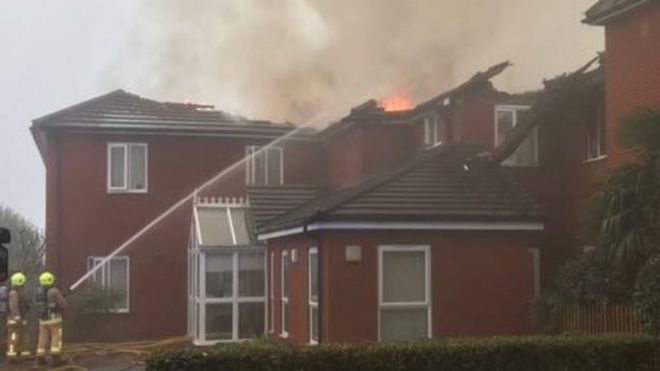
A "fierce fire" at a care home has left two people dead - with a further 33 having to be rescued from the collapsing building.
The blaze gutted Newgrange Care Home in Cadmore Lane, Cheshunt, after it broke out at about 06:00 BST.
Despite firefighters launching a "challenging" rescue operation, they were unable to save everyone inside.
Three more residents needed hospital treatment for minor burns and smoke inhalation, the fire service said.
Richard Hammond, an executive director at Princess Alexandra Hospital, said two of the three patients were still being treated but their condition was not known.
Chief fire officer for Hertfordshire, Darryl Keen, said the fire "had spread inside the roof all the way along the entire property".
"We had a number of people that were unable to get themselves out, you know, physically would not have been able to move even under normal circumstances," he said.



